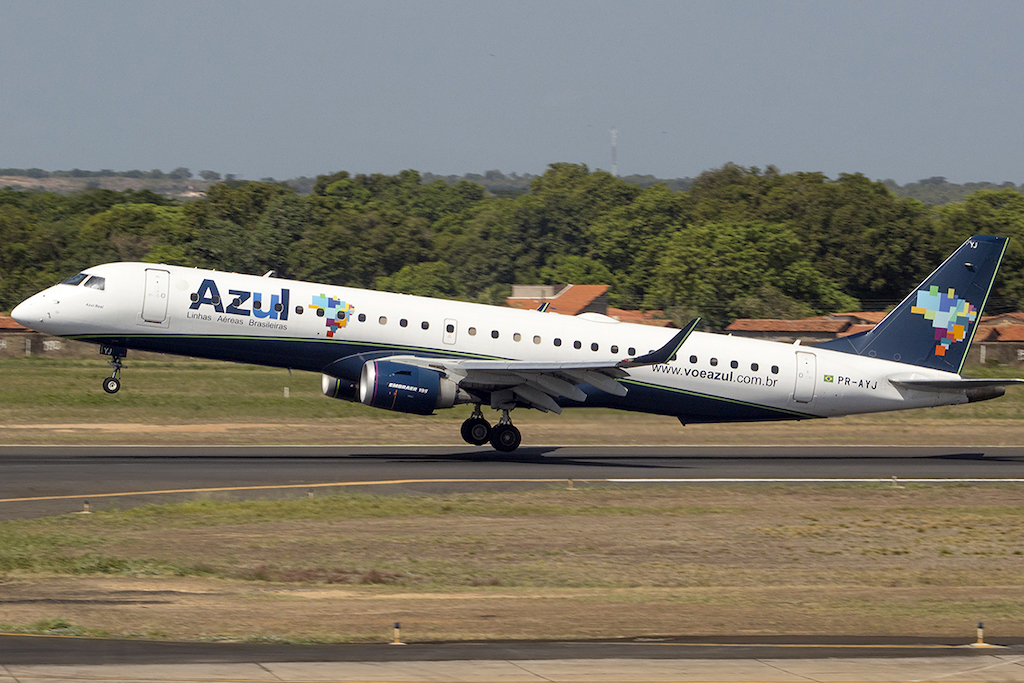Azul Boasts of Big Cargo Ambitions in Pandemic Recovery

Photo Credit: Brazilians increasingly are taking vacations at home, fueling Azul's third-quarter results. Flickr / Alexandro Dias
Cargo has proven a boon for many carriers during the coronavirus pandemic. Passenger airlines like Air Canada have converted aircraft to all-cargo operations to offset losses, while others like Korean Air have turned profits on the back of their air freight businesses.
Azul is one airline where the strength of air cargo demand is on display as it emerges from the crisis. The carrier saw cargo revenues jump 53 percent to 228 million reais ($43 million) in the first quarter compared to 2020. And executives expect full year revenues to double compared to 2019 as demand continues to rise unabated.
“We are very bullish about our cargo business," said Azul CEO John Rodgerson during the carrier's first-quarter results call on Thursday. "It is certainly the story of Azul over the next several years.”
Azul is not alone in seeing a surge in cargo business. In March, the IATA recorded the highest level of cargo ton kilometers globally since it began tracking the metric in 1990. However, despite the global rise, Latin America saw a nearly 24 percent decrease in international air cargo volumes during the month.
The success of Azul Cargo rests on the back of the airline's passenger strategy: offering a broad hub-and-spoke domestic network serving more cities in Brazil than any other carrier, executives said. This gives its freight division a competitive time advantage in getting goods to more cities across the country. Its focus on the domestic market also partially insulates the company from any drop in international air freight.
Azul Cargo controls roughly one-third of domestic air freight revenues in Brazil today, according to the airline. This is up from a 22 percent share in 2019. Competitors include passenger carriers Gol and LATAM Airlines, as well as dedicated operators LATAM Cargo and Sideral Linhas Aéreas.
“Our target is to fish in that 45 billion reais ocean," said Azul Chief Revenue Officer Abhi Manoj Shah during the call. The airline aims to expand by capturing a larger share of the roughly 45 billion reais worth of domestic logistics business for good like electronics and clothing. Air freight only amounts roughly 3 billion reais, or less than 7 percent, of that market today.
Is a Brazilian Passenger Inflection Point Coming?
Brazil is still in the midst of a crippling second wave of Covid-19 infections. While daily deaths have decreased in recent weeks — the total number passed 400,000 people at the end of April — the toll remains one of the highest in the world. Some experts warn that the worst is yet to come for the country.
World Health Organization data shows the number of new infections in Brazil tapering slightly since peaking during the week of March 22. For the week of April 26, the latest with full data, new infections were down nearly 21 percent from the peak to roughly 422,000. The drop is far more gradual than it was in the U.S. after that country's third wave subsided in January.
But those warnings seem at odds with the mood at Azul. Rodgerson said the number of Brazilians with at least one shot of a Covid-19 vaccine has hit a quarter of the eligible population. This was the point in the U.S. when domestic airlines began to see an inflection in new bookings, which for them occurred around March.
“There’s strong reason to believe the [Brazil] domestic market will experience a similar inflection point within the next two- to four-weeks," he said.
This forecast inflection appears to be already playing out in Azul's bookings. The airline has seen a "continuous improvement” in demand over the past four weeks, with bookings rising 40 percent — though no benchmark was given — in just the past two weeks, said Shah. He cited the relaxation of coronavirus restrictions in all 27 of Brazil's states for the improvements.
Even business travel, key to most airline revenues, is back to 35-40 percent of pre-crisis levels at Azul, added Shah.
Of course Brazilians have proven more willing to fly despite a continued risk of Covid-19. This is what occurred during the last few months of 2020 when the country's airlines recovered to near 2019 capacity levels even as the number of new infections remained above 100,000 a week. The question is whether Brazil can keep its vaccination campaign moving fast enough to stay ahead of variants as well as the southern winter, when colds and flus flourish.
In the first quarter, Azul posted a net loss of 2.65 billion reais, or 1.12 billion reais when adjusted to exclude foreign exchange and other charges. Revenues decreased nearly 35 percent year-over-year to 1.8 billion reais and expenses by more than 22 percent to 2.04 billion reais. Passenger traffic was down more than 27 percent on a 23 percent drop in capacity. However, capacity was up 9 percent compared to the first quarter of 2019.
